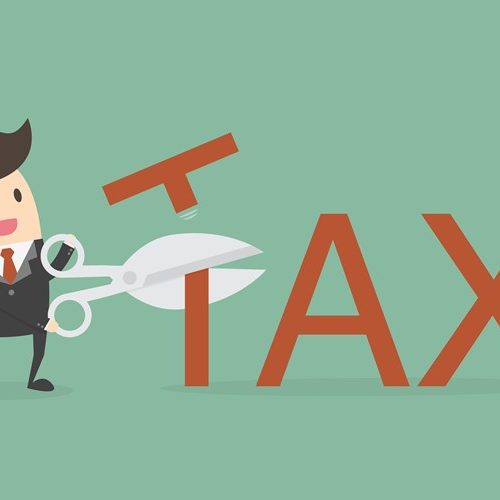

The BADR Capital Gains Tax rate has risen to 14% from April 2025 and will increase further to 18% in April 2026.
Business Asset Disposal Relief (BADR) offers a valuable tax advantage by applying a reduced rate of Capital Gains Tax (CGT) on the sale of a business, shares in a trading company or an individual’s interest in a trading partnership.
As part of the measures announced in the Autumn 2024 Budget, the CGT rate for gains eligible for BADR has increased. For disposals made on or after 6 April 2025, the CGT rate has risen from the previous 10% to a higher rate of 14%. This change is now in effect and applies to any qualifying disposals taking place within the 2025–26 tax year.
Another forthcoming increase to the CGT rate under BADR is set to take place from 6 April 2026. It will rise to 18%. This means that disposals qualifying for BADR on or after this date will face a significantly higher tax charge compared to the original 10% rate that had long been associated with the relief.
The lifetime limit for claiming BADR remains at £1 million. This means that individuals can still benefit from the relief more than once, provided the cumulative gains across all qualifying disposals do not exceed this threshold.
Changes have also been made to Investors’ Relief. Specifically, the lifetime limit for Investors’ Relief was reduced from £10 million to £1 million for qualifying disposals made on or after 30 October 2024. In addition, the CGT rates for Investors’ Relief have now been brought in line with those of BADR currently at 14% and increasing to 18% from April 2026.

Business Asset Rollover Relief, allows taxpayers to defer Capital Gains Tax (CGT) on gains arising from the sale or disposal of certain business assets, provided the proceeds are reinvested into new business assets. Rather than paying CGT immediately, the gain is "rolled over" into the cost of the new asset, and the tax liability is deferred until that new asset is eventually sold.
If part of the proceeds from the original asset’s sale is reinvested, a partial rollover relief claim can be made. Taxpayers may also apply for provisional relief if they intend to purchase replacement assets but have not yet done so. Additionally, rollover relief may apply where the proceeds are used to improve existing business assets, not just to acquire new ones. The amount of relief available depends on how much of the proceeds are reinvested.
To qualify, certain conditions must be met. The replacement assets must be purchased within three years after, or up to one year before, the disposal of the old assets. In some cases, HMRC may extend these time limits. Both the old and new assets must be actively used in the business, and the business must be trading at the time of sale and acquisition. Finally, the relief must be claimed within four years from the end of the tax year in which the new asset was acquired, or the old one sold, if that occurred later.

A negligible value claim lets taxpayers declare an asset worthless for tax purposes, realising a capital loss without selling. This can be backdated up to two years, offering flexibility in managing tax liabilities.
A negligible value claim is a claim made by a taxpayer when an asset they own has significantly decreased in value, essentially becoming worthless or worth next to nothing.
In such a situation, the taxpayer may treat the asset as if it were disposed of even though the retain ownership. For a negligible value claim to be valid, the asset must still be owned by the individual making the claim, and it must have become of negligible value while under their ownership.
The primary benefit of making a negligible value claim is that it allows the taxpayer to realise a capital loss on the asset without the need for an actual sale or disposal. This is particularly advantageous for assets that could, in theory, regain value at some point in the future. By retaining ownership of the asset, the taxpayer maintains the potential for any future recovery in value, even if the likelihood of this occurring is remote.
HMRC provides a negligible value list, which includes shares or securities that were previously quoted on the London Stock Exchange and have been officially declared of negligible value for the purpose of making such claims. For assets not on this list, a formal application must be submitted to HMRC to agree upon a valuation, enabling the taxpayer to establish the asset’s negligible value.
Additionally, a negligible value claim is not restricted to the current tax year. It can be backdated to cover up to two preceding tax years, provided all other qualifying conditions are met. This feature allows taxpayers greater flexibility in managing their capital losses over a longer period.

From April 2025, the Capital Gains Tax rate on Business Asset Disposal Relief rises from 10% to 14%, increasing to 18% in 2026. Business owners planning to sell may benefit from acting before these changes take effect.
Currently, Business Asset Disposal Relief (BADR) provides a reduced Capital Gains Tax (CGT) rate of 10% on the sale of a business, shares in a trading company, or an individual's interest in a trading partnership. This relief can lead to significant tax savings for those selling their business.
However, as part of the Autumn Budget 2024 measures, the CGT rate for BADR gains will from 6 April 2025, rise to 14% for disposals made on or after that date. Furthermore, the rate is set to increase again to 18% for disposals made on or after 6 April 2026.
Currently, the lifetime limit for claiming BADR is £1 million, allowing business owners to qualify for the relief multiple times. There have been no changes to this limit in the recent Budget, although the lifetime limit may have been higher for assets sold before 11 March 2020.
In contrast, Investors’ Relief has already undergone changes: the lifetime limit has been reduced from £10 million to £1 million for qualifying disposals made on or after 30 October 2024. The CGT rates for Investors' Relief align with those of BADR.
Given these planned increases, business owners considering an exit strategy may wish to act sooner rather than later, as selling before April 2025 could help lock in the current 10% CGT rate.

Renting out part of your home may affect Capital Gains Tax when you sell. While Private Residence Relief applies, Letting Relief can reduce taxable gains. Learn how PRR, Letting Relief, and exemptions impact your tax liability.
If you have tenants in your home, it is essential to understand the Capital Gains Tax (CGT) implications. Typically, there is no CGT on the sale of a property used as your main residence due to Private Residence Relief (PRR). However, if part of your home has been let out, your entitlement to PRR may be affected.
Homeowners who let out part of their property may not qualify for the full PRR, but they could be eligible for letting relief. Letting relief is available to homeowners who live in their property while renting out a portion of it.
The maximum letting relief you can claim is the lesser of the following:
Example:
In this case, the maximum letting relief due is £7,500, which is the lower of:
As a result, you would not owe any CGT—the £75,000 gain is fully covered by £67,500 in PRR and £7,500 in letting relief.
Note that if you have a lodger who shares living space with you or if your children or parents live with you and pay rent or contribute to housekeeping, you are not considered to be letting out part of your home for tax purposes.

Separation and divorce can create tax implications, particularly Capital Gains Tax (CGT) on asset transfers. New rules from April 2023 extend the ‘no gain/no loss’ period, helping spouses manage tax efficiently. Private Residence Relief may also apply.
When a couple separate or divorce, their focus is typically directed towards the emotional and practical aspects of the process. However, it is essential to recognise that alongside the emotional challenges, there are significant tax considerations that can arise from the transfer of assets. These tax implications, if not properly managed, can lead to unintended financial consequences for one or both parties involved.
One of the key tax issues that arises during separation or divorce pertains to the application of Capital Gains Tax (CGT) on the transfer of assets between spouses or civil partners. Notably, the CGT rules that govern disposals of assets during separation and divorce underwent significant amendments for transactions occurring on or after 6 April 2023. Under the revised regulations, the period within which separating spouses and civil partners can transfer assets on a 'no gain/no loss' basis was extended to up to three years from the date they cease living together. An unlimited period for making such transfers is allowed if the assets in question are covered by a formal divorce agreement, ensuring that no immediate CGT liabilities arise.
In addition to the revised CGT provisions, there are specific rules that apply to individuals who continue to hold a financial interest in the family home following separation. These rules are particularly relevant when the home is eventually sold. In such instances, individuals may be eligible to claim Private Residence Relief (PRR), which can exempt them from paying CGT on the sale of the property, provided it meets certain qualifying criteria.
In the midst of divorce proceedings, it is also crucial for both parties to consider reaching a financial settlement that is as mutually agreeable as possible. In situations where the couple is unable to reach an amicable financial agreement, the court may intervene to issue a 'financial order.' This legal order will outline the distribution of assets, financial support, and any other relevant arrangements.

Business Asset Rollover Relief allows you to defer Capital Gains Tax (CGT) when reinvesting proceeds from selling business assets. By rolling gains into the cost of new assets, tax is postponed until the new asset is sold. Learn how this relief can optimise your business investments.
Rolling over capital gains is a useful way to defer CGT when you sell or dispose of business assets.
Essentially, if you use the proceeds from selling an old asset to buy a new one, the gain is "rolled over" into the cost of the new asset. This means you do not have to pay CGT on the gain immediately; instead, the tax is deferred until you sell the new asset. This relief is known as Business Asset Rollover Relief. The amount of the gain is effectively rolled over into the cost of the new asset and any CGT liability is deferred until the new asset is sold.
If you do not use all the proceeds from the sale to buy a new asset, you can still make a partial rollover claim. Additionally, you can apply for provisional rollover relief if you plan to buy new assets but have not yet done so.
Rollover relief also applies if you use the sale proceeds to improve assets you already own.
The total amount of relief depends on how much you reinvest in new assets. There are a few conditions to keep in mind.

Owning more than one property? You can claim Capital Gains Tax (CGT) relief on just one at a time. By formally electing your main residence within two years of property changes, you can optimise your CGT exemption and make the most of key tax benefits.
Taxpayers who own more than one property should be aware of a number of important considerations. An individual, married couple, or civil partnership can only claim Capital Gains Tax (CGT) relief on one property at a time. However, it is possible to designate which property will benefit from the CGT exemption at the time of sale by making a formal election.
To nominate a property as the main residence, a letter must be sent to HMRC specifying the full address of the property being nominated. This nomination must be signed by all owners of the property and the election must be made within two years of any change in the combination of properties owned. Additionally, the property must have been occupied as the main or only residence at some point in the past.
There are specific rules governing overseas properties and for non-UK residents. It is important to carefully consider the timing and frequency of making such elections. Notably, if a property has been used as a private residence at any time, the final nine months of ownership are disregarded for CGT purposes even if the individual was not residing in the property when it was sold.